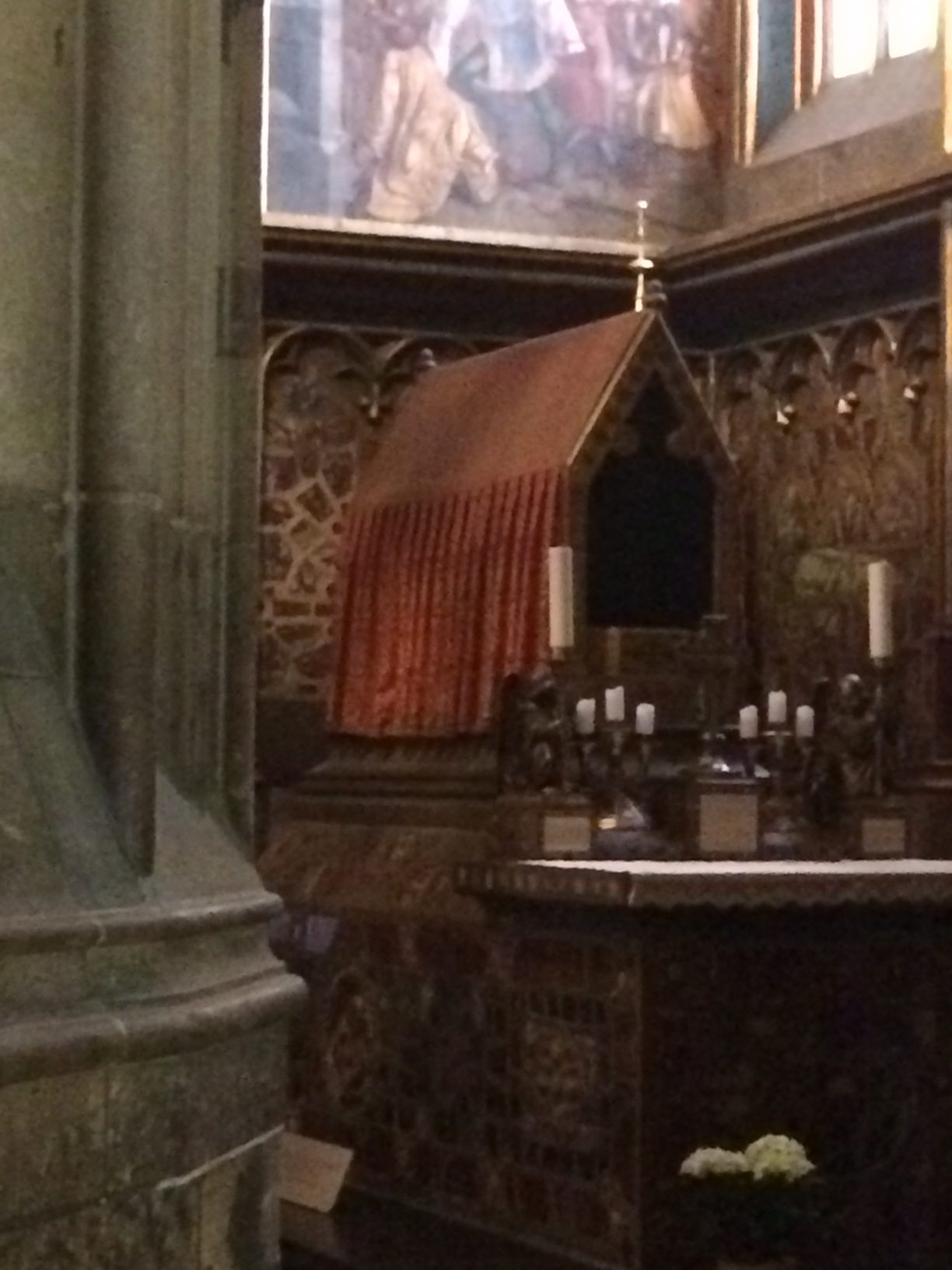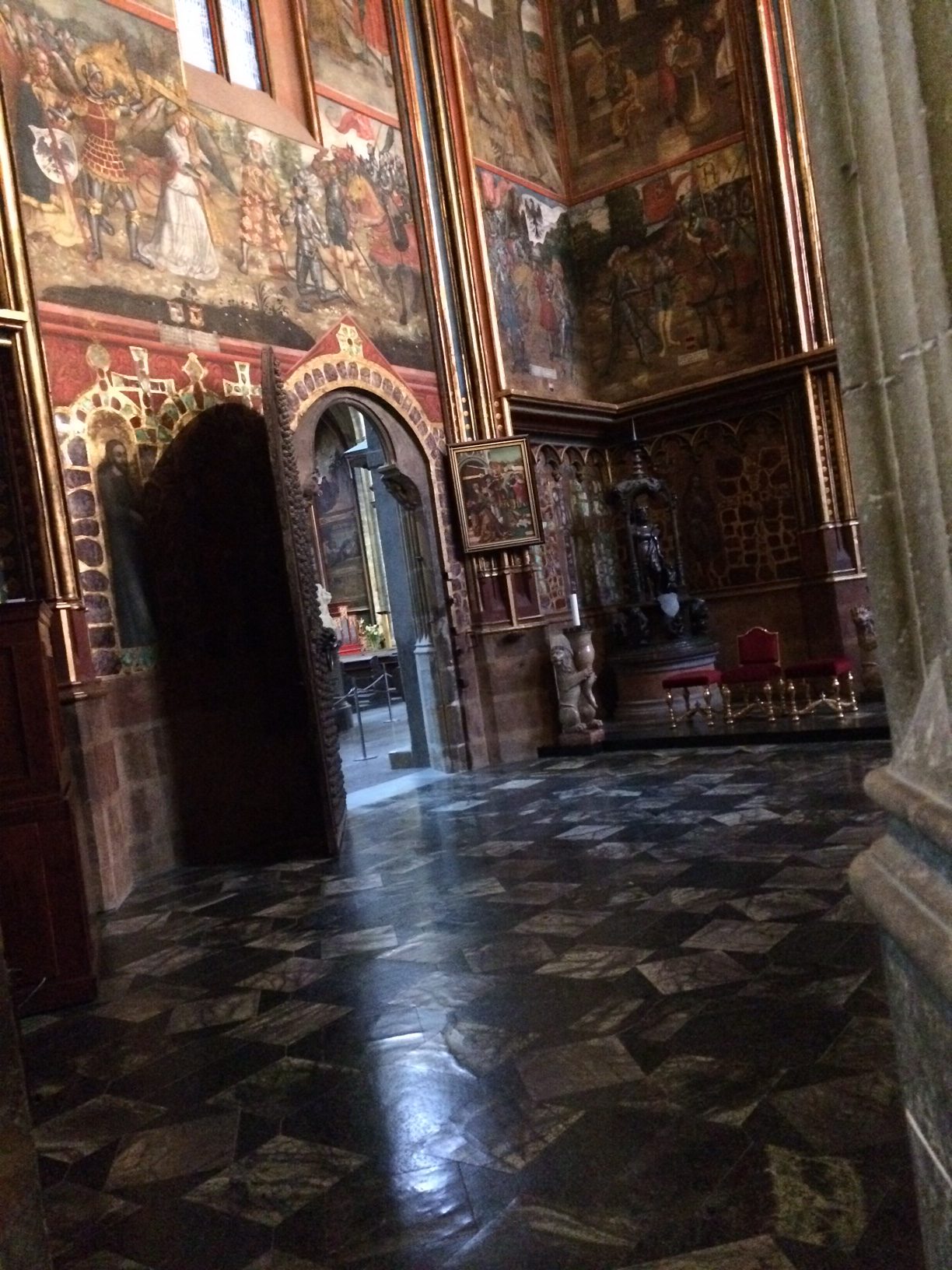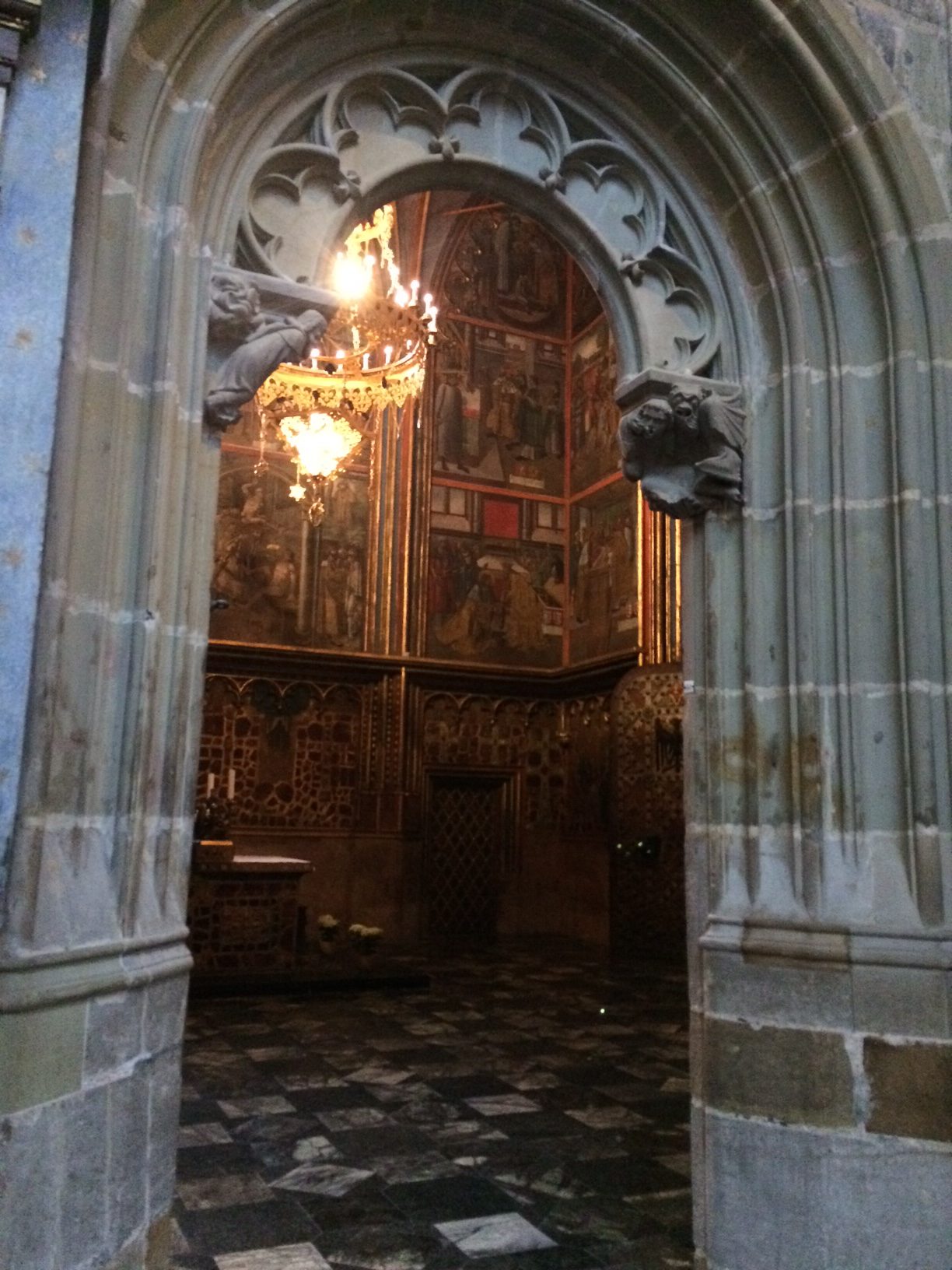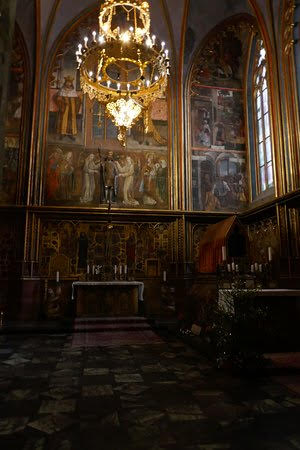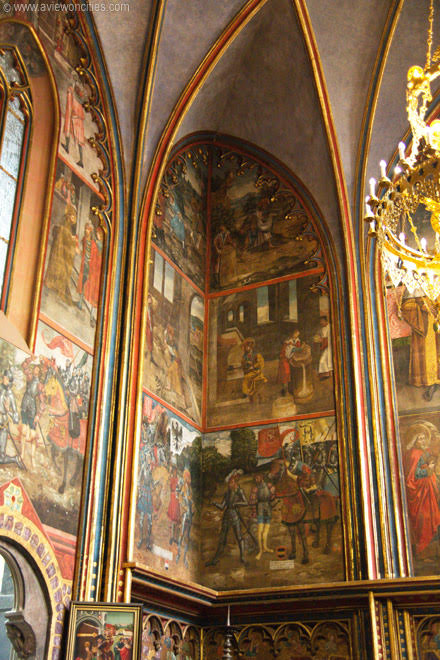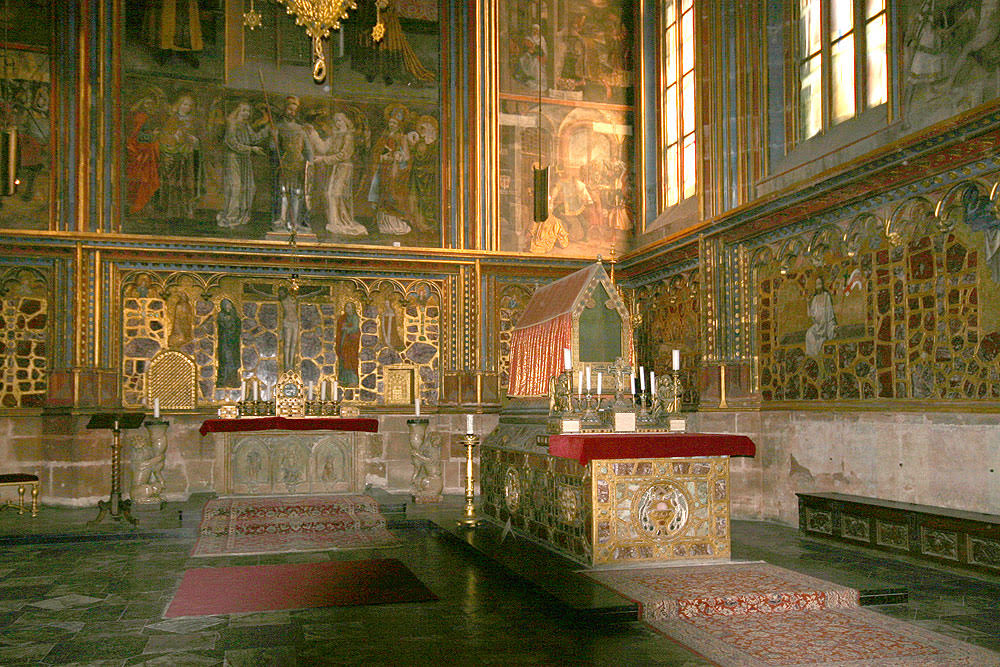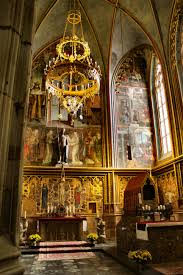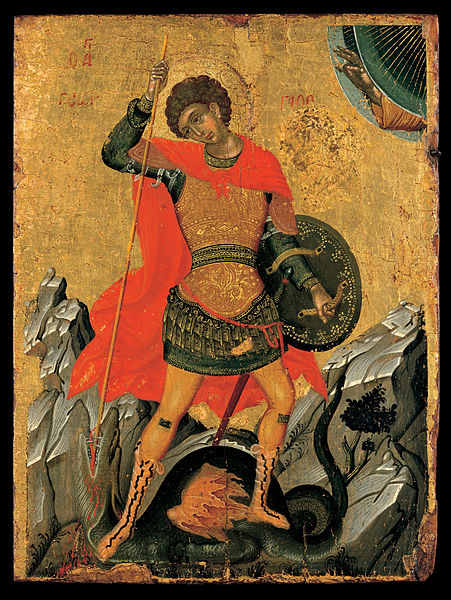
Icon of St. George killing the dragon from the late 1400s.
St. George is probably best known for killing the dragon. But there are many other legends and customs associated with the celebration of St. George’s Day on April 23 or the night before (St. George’s Eve). One of the most mysterious is that of the Master of the Wolves. On St. George’s Eve a man is wandering in the forest, becomes tired, and climbs into a tree to rest. He falls asleep. When he awakes, he sees the Master of the Wolves below him, who is giving out food to the wolves or werewolves, sometimes sending them in all directions to search for food. The last in line is the Lame Wolf. Since there is no more food, the Master of the Wolves says he can eat the man watching from the tree.
Among part of the southern Slavs (Serbs, Macedonians, Bulgarians) the legends and beliefs about the Master of the Wolves are also connected with numerous commandments, prohibitions and customs associated into the so-called “wolf holidays”. Legends about some type of Master of the Wolves can also be found in written form among the majority of southern and eastern Slavs, partially also among the Poles, and among the Estonians, the Gagauz in Moldavia, in Latvia, Romania and in an incomplete form even in France. His function, as can be established from the legends and beliefs, is to lead the wolves and determine what they may and may not eat. In some versions of the legend, the Master of Wolves is St. George himself! (For more about the Master of Wolves, read here.)
In the book Dracula, by Bram Stoker, evil things are said to occur on St George’s Day, beginning at midnight. The date of St George’s Day presented in the book, 5 May (on the Western, Gregorian calendar), is St George’s Day as observed by the Eastern Orthodox churches of that era:
“Do you know what day it is?” I answered that it was the fourth of May. She shook her head as she said again: “Oh, yes! I know that, I know that! but do you know what day it is?” On my saying that I did not understand, she went on: “It is the eve of St. George’s Day. Do you not know that tonight, when the clock strikes midnight, all the evil things in the world will have full sway?”(Excerpt from Dracula, 1897)

